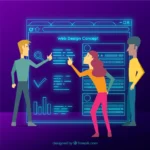In the field of education, acronyms are everywhere, and one that often comes up is BRC. If you work in education or are involved in educational administration, you may have heard of BRC but might not fully understand its role or significance. So, what exactly does BRC stand for, and what does it do?
In this blog, we’ll break down the full form of BRC, explain its importance in the education system, and explore the key functions it serves to enhance the quality of learning in schools, especially at the local level.
What Does BRC Stand for in Education?
The full form of BRC is Block Resource Centre. It’s a key part of the decentralized support structure in the education system, especially in countries like India. The main purpose of a Block Resource Centre is to act as a hub for providing academic and administrative support to schools within a specific block (a sub-division of a district).
BRCs are essential for connecting local schools with district-level education authorities, ensuring that schools receive the guidance, training, and resources they need to improve educational quality. The primary objective of a BRC is to support schools in enhancing their teaching methods and boosting student outcomes.
The Key Functions of BRC in Education
Block Resource Centres play a crucial role in improving the educational ecosystem by offering various forms of support to schools and teachers. Here are some of the key functions that BRCs carry out:
1. Teacher Training and Professional Development
One of the core responsibilities of a BRC is to provide ongoing teacher training and professional development opportunities. Teachers need to stay updated on the latest teaching strategies, educational technologies, and curriculum changes to improve classroom learning.
BRCs organize workshops, seminars, and refresher courses that help teachers acquire new skills and knowledge. Whether it’s learning about innovative teaching methods, integrating technology into lessons, or understanding child psychology, these trainings are designed to enhance teachers’ effectiveness in the classroom.
This is particularly crucial in rural areas or regions with limited resources, where teachers might not otherwise have access to professional development opportunities. By supporting teacher growth, BRCs directly contribute to improving the overall quality of education.
2. Morning and Evaluating School Performance
BRCs are also tasked with monitoring and evaluating the performance of schools within their block. This involves regular visits to schools to assess their progress, identify challenges, and ensure compliance with educational standards and policies.
By collecting data on student attendance, academic performance, and the effectiveness of teaching methods, BRC officials can identify areas that need improvement. This monitoring process ensures that schools are functioning efficiently and that interventions can be implemented when needed. It also helps in evaluating the impact of government educational programs on a local level.
3. Supporting Curriculum Implementation
Ensuring that schools effectively deliver the curriculum is another critical function of a BRC. They provide support to schools in implementing the curriculum as per the state or national guidelines. BRCs work closely with teachers to help them understand how to teach the curriculum in ways that meet learning objectives and enhance student engagement.
When there are changes to the curriculum, such as new educational policies or revised learning standards, BRCs act as a bridge between the education department and schools. They ensure that teachers are well-prepared to integrate any changes into their lesson plans effectively.
4. Providing Educational Resources
Another key role of a BRC is to distribute educational resources to schools. These resources can include textbooks, learning aids, digital tools, and other materials needed to create an effective learning environment. BRCs work to ensure that all schools in the block have access to the necessary resources, especially in underprivileged areas where resources may be scarce.
In some cases, BRCs also collaborate with NGOs or other organizations to provide additional support, such as scholarships or extra learning materials. The goal is to make sure that schools are well-equipped to deliver quality education to their students.
5. Offering Mentorship and Guidance to Teachers
Beyond formal training, BRCs provide mentorship and guidance to teachers on an ongoing basis. Officials from the BRC often visit schools to observe classes and offer feedback to teachers, helping them refine their teaching techniques. This hands-on approach helps build confidence among teachers and encourages continuous improvement.
Teachers can also reach out to BRCs for advice on classroom management, lesson planning, or dealing with specific student challenges. This level of support ensures that teachers have the tools and knowledge they need to provide high-quality education.
6. Data Collection and Reporting
BRCs are responsible for collecting essential data from the schools in their block, including information on student enrollment, attendance, and academic performance. This data is then reported to district education authorities to help shape educational policies and allocate resources more effectively.
This data-driven approach allows for the identification of trends and problem areas that need attention, enabling the education system to respond with targeted interventions.
Why BRCs Are Important for Strengthening Education
Block Resource Centres play a pivotal role in strengthening the education system, particularly in rural and under-resourced areas. By acting as intermediaries between district education offices and individual schools, BRCs ensure that schools get the support they need to enhance their educational quality.
Their focus on teacher training, resource distribution, curriculum implementation, and school monitoring ensures that schools are consistently improving. This not only benefits teachers but also helps students receive a higher standard of education, which is critical for long-term academic success.
In areas where access to quality education is limited, BRCs are a lifeline that helps bridge the gap, ensuring that every child has the opportunity to learn and grow.
Conclusion
In summary, the full form of BRC in education is Block Resource Centre, and it serves a critical function in supporting schools at the local level. From providing teacher training and distributing resources to monitoring school performance and implementing curricula, BRCs help strengthen the educational framework by offering hands-on support to teachers and schools.
The work carried out by BRCs directly impacts the quality of education students receive, making them an essential part of the education system. Understanding the role of BRCs highlights their importance in creating a more equitable and effective learning environment for all.











